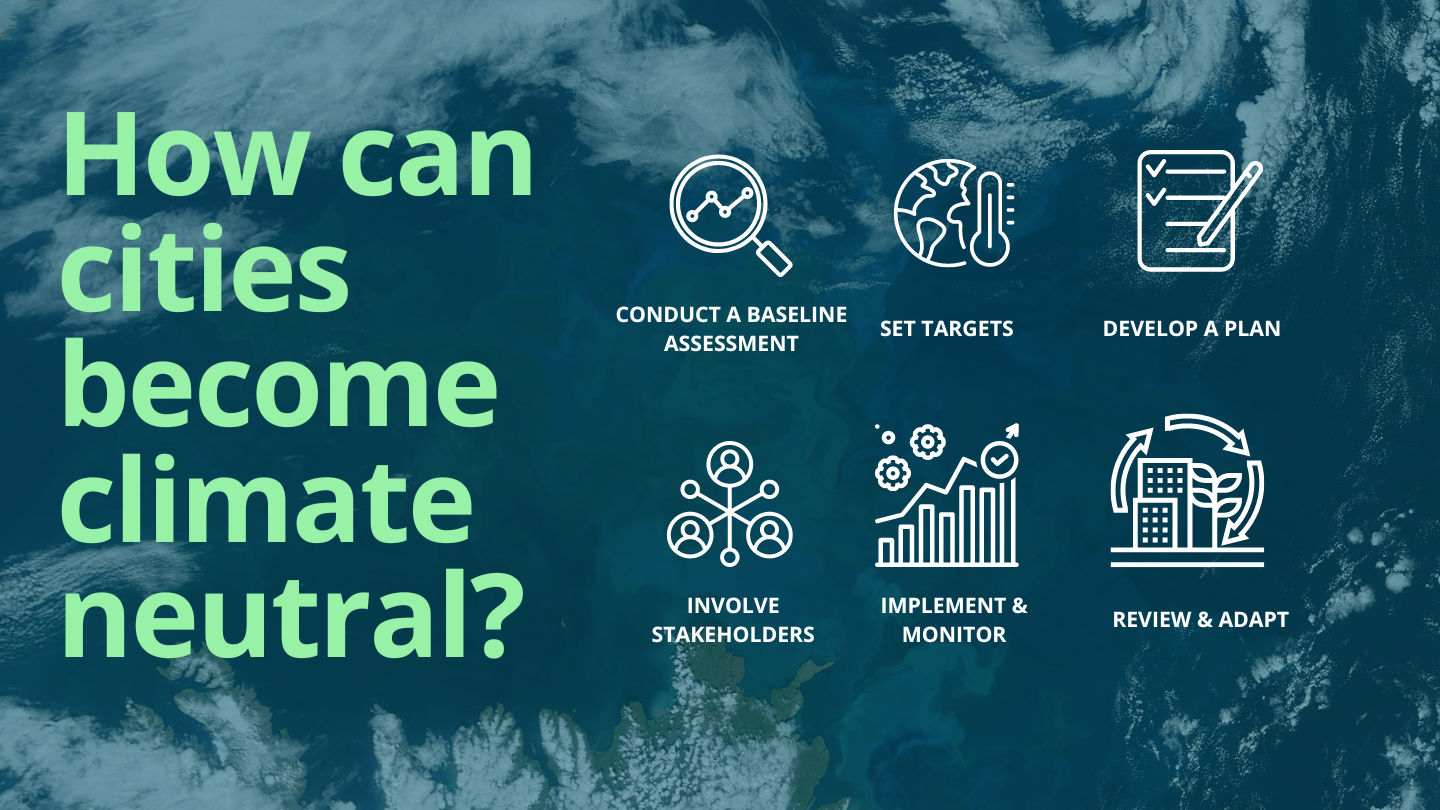How can cities become climate neutral?
Other
Location
Becoming climate neutral is a complex and multi-faceted process that requires a comprehensive approach. Here are some general steps that a city could take to start the process of becoming climate neutral:
- Conduct a baseline assessment: The first step in becoming climate neutral is to understand the current state of the city's energy and resource use, greenhouse gas (GHG) emissions, and potential mitigation opportunities. This can be done through a thorough baseline assessment, which should include an inventory of the city's current energy consumption and GHG emissions, as well as an analysis of the potential for renewable energy, energy efficiency, and other mitigation measures.
- Set targets: Once the city has a clear understanding of its current energy consumption and GHG emissions, it can set targets for reducing emissions and increasing the use of renewable energy sources. This should take into account the city's specific circumstances and challenges, as well as the overall goal of reaching climate neutrality.
- Develop a plan: Based on the targets and the findings of the baseline assessment, the city can develop a detailed plan for achieving climate neutrality. This plan should include specific actions and initiatives that the city will take to reduce emissions and increase the use of renewable energy, such as increasing energy efficiency, promoting electric mobility, and increasing the use of renewable energy.
- Involve stakeholders: Achieving climate neutrality requires the participation and buy-in of multiple stakeholders, including the city government, private sector, civil society, and citizens. It is important that the city engages with these stakeholders and involves them in the process of developing and implementing the plan.
- Implement and monitor: Once the plan is developed, the city can begin to implement the specific actions and initiatives outlined in the plan. It's important to monitor progress and evaluate the effectiveness of the actions taken to ensure that the city is on track to meet its targets and reach climate neutrality.
- Review and adapt: The process of becoming climate neutral is ongoing and dynamic. The city should regularly review its progress and adapt its plan as necessary to ensure that it remains on track to reach its targets.
Of course, this is a general approach and it should be tailored to the specific conditions of each city. Some cities may have more advanced technologies or regulations, while other cities may face more challenges in funding or community engagement. However, by following these steps, a city can start the process of becoming climate neutral and make meaningful progress towards this goal.
